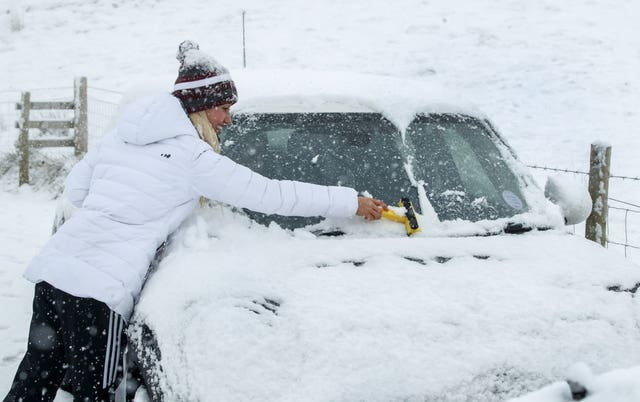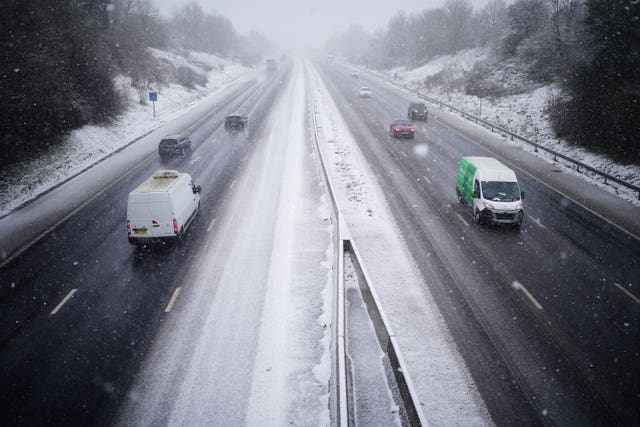With snow already falling across many parts of the UK, and with more forecast, it is bringing disruption on many roads.
Driving in the snow and ice brings greater risk, and can make things more difficult in general too.
Snow driving is something that many people worry about, but if you need to head out on the road, here are some top tips:
– Ask if you need to drive
The first thing you should think about is whether you need to travel in the snow. If the journey is not essential, it is worth staying at home and not having to negotiate the wintry roads.
– Clear all the snow from your car before driving
If you do need to head out on the roads in the snow, the first place to start is by making sure you have cleared as much snow as possible from your vehicle before setting off.

It is illegal to drive with a windscreen covered in snow and ice, so you should make sure it is cleared properly.
Dedicated de-icing products can be used if the vehicle is frozen over or a good old-fashioned ice scraper will help on the windscreen itself. Do not forget the side windows and rear glass.
You should remove as much snow from the roof and bonnet of your vehicle as possible too, as the last thing you want is hard bits of snow flying off your vehicle. Chunks of ice coming off one vehicle have been known to smash the windows of others.
– Do not leave your vehicle unattended
While waiting for your vehicle to defrost, it is hugely important not to leave it running unattended.
It is times like this that many opportunist thieves strike and that is the last thing you would want to happen.
If your vehicle is stolen with the keys inside or in the ignition, insurers may not pay out, either.
Always stay with your vehicle while it is defrosting.
– Try and stick to the main roads
Once you are behind the wheel, wherever possible you should try and stick to main roads.
These are the most likely to have been gritted and be clear, as more drivers will have been using them too.
Smaller back roads are often likely to have built-up snow still, even some time after the snow has fallen.

It is worth trying to stick to flatter routes without hills if you have the option, too, and particularly in heavier snowfall or in strong winds, these will be the least likely to be affected by snowdrifts.
– Leave plenty of time and keep your distance
When driving in the snow, or any poor weather for that matter, one of the best things you can do is leave plenty of time as the last thing you want is to be rushing.
You should also leave a far bigger gap between you and other vehicles in the snow, too, because the risk of ice and snow means braking distances are far greater should you need to slow down or come to a stop.
It also helps traffic to move continuously without stopping and starting, and reduces the chance of you getting stuck in the snow.
– Be gentle with car inputs
Some of the best advice for driving in the snow is to be as gentle as possible with your inputs.
Harsh accelerating, braking and steering will all upset the vehicle and make it far more likely to spin or lose control.
Maintaining a constant speed, being very gentle with steering and avoiding braking wherever possible will all help in snow driving.

You should also change up gears earlier than you might do normally and it is a good idea to set off from a standstill in second gear as this will reduce the chance of the wheels spinning.
– Pack prepared
The last thing you want to happen in the snow is to get stuck, but this is a risk you need to think about.
Especially if you are driving on more rural or isolated routes, it is important to pack prepared should the worst happen and you get stuck.
So, before doing any longer journey in the snow, you should make sure you’re carrying essential supplies, including food and something to drink, as well as warm clothing.




Comments & Moderation
Readers’ comments: You are personally liable for the content of any comments you upload to this website, so please act responsibly. We do not pre-moderate or monitor readers’ comments appearing on our websites, but we do post-moderate in response to complaints we receive or otherwise when a potential problem comes to our attention. You can make a complaint by using the ‘report this post’ link . We may then apply our discretion under the user terms to amend or delete comments.
Post moderation is undertaken full-time 9am-6pm on weekdays, and on a part-time basis outwith those hours.
Read the rules here